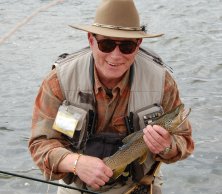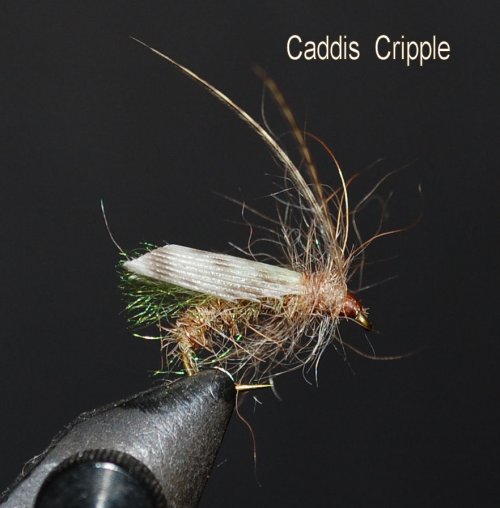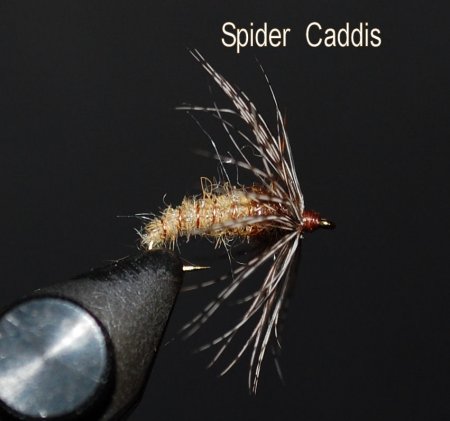Biology Rhythm, a pattern of involuntary behavior, action, occurring regularly and periodically. Scientifically this is called circadian rhythm.
Biology Rhythm, a pattern of involuntary behavior, action, occurring regularly and periodically. Scientifically this is called circadian rhythm.
I will be discussing trout that live in rivers and streams, for they must survive the fluctuating currents of water. Trout will feed in different ways but their main source is to establish a comfortable feeding lie which has a current that they can hold in without excessive use of energy. The more dominant trout will chase off the less dominant to hold this lie. One of the main objectives from this lie will be the available food that the currents carry to their position. The food trout consume will be used in three different ways. The first part of the food is used to produce energy for muscular activities and internal purposes just to sustain life. Nourishment not used for the first part will go to the growth of muscle, bone, and body tissue. Any nourishment left will be stored to create fat. The fat is only created after the first two parts of life are met. All living forms of life, must ingest some sort of nourishment to survive. Nature gave trout the ability to literally be eating machines. There are certain times of the seasons when trout will hold in a lie and just glutton themselves.
There is one particular time of the year that I am brimming with anticipation of a hatch. Going through sleepless nights, hours at the tying bench trying to create a new imitation of the hatch, with my wife saying come to bed, come to bed. Finally the time is near, it could start any day. I drive to different streams taking long views of the water and always keeping the birds in sight. Then, finding that certain stretch of water, with the passion of a young boy who is preparing to lure his first trout to his fly. I am concealed within the vegetation along the steam and observing the serene setting. With my eyes I"m photographing the pastoral views. The trees along the stream are echoing melodies of song through their branches from the variety of birds. Patches of green grass carry a yellow hue from the freshly sprouted dandelions. Seeing these glowing yellow flowers I remembered my boyhood and helping my grandfather cut them so he could make the first batch of wine for the season. Grandfather was no fisherman but he knew how to make tasty brew from what nature provided him.
The stream I am standing along is not written about or photographed but it holds a substantial number of trout. The reason for coming to this stream is the phenomenal hatch of Grannoms , Brachycentrus, the Mother's Day caddis hatch, and a multitude of them. My eyes are searching the riffle water and where it enters the calmer pools. The sky is a blueish gray and the dampness in the air can be felt. The riffling water stills sparkles because it is limpid and clean. Birds are in erratic flight patterns. Then it starts, I see the first dorsal fin and tail. My mind and body are full of anticipation of the first casts. I stand quietly to give the trout time to pod and feel comfortable. The caddis pupa start gaining in numbers and I see more dorsal fins and tails as the trout select their lies. Minutes pass by and the trout are under way in their rhythm feeding. What causes this type of feeding are the hundreds of caddis pupa entering the drift. They will drift in the water column until they find the water type and temperature that satisfies their need. At that time, the caddis will penetrate the meniscus to enter adulthood.
Still standing and watching because I must locate the last trout in the pod down stream, for he will be my first opponent. All the trout are feeding with their own rhythm and one thing on their minds filling their stomachs to the gills without excessive loss of energy. There are so many caddis pupa drifting in the current these trout will not move one inch to the left or right to take one. My cast must be precise with the rhythm of the take. I really enjoy watching a trout sip a fly from the surface. When they are feeding on so many easy pupa they are difficult to fool with a high riding dry. I have found two fly patterns that work very well on trout feeding in this rhythm cycle. Both flies represent stillborns or cripples and fished in the surface film. With the proper timing trout will poke their nose through the meniscus to take these imitations. These flies should be presented across and a little up stream. This presentation will not show any tippet, leader, or line to any trout. Upon the take of the fly I automatically sweep my rode low and down stream for a solid hook set, turning the trouts head to go down stream. If this is done with all the perfect timing I will catch every trout in the pod.
I've located the last trout in the pod. Now I'm searching for the position in the stream that will enable me to outwit these feeding trout. Entering the stream below the trout I wade very leisurely to the other side. Then, wading up stream to be across current from the pod of trout I locate a position for flawless casting and a spot where I can cast from a kneeling position. I must stay as quiet as possible and out of sight. Trout take the opportunity to feed in this manner because all three nourishment requirements are met with little or no energy wasted. The trout do this by cocking their pictorial fins to rise in the water column. During the rise they open their mouths extracting the water through their gills, which creates an intake flow. At this time, the pupa enter the trouts mouth. The trout then will close its mouth, cock its fins in the other direction and go back down. Each trout will have its own interval of feeding. The two flies I use are pictured with the tying patterns. I hope you will enjoy the opportunities we are given to spend time with nature and her majestic trout. It turned out to be a classic few hours of fly fishing.
Spider Caddis
Hook - Daiichi - 1270 16 - 18 - 20
Thread - UNI 8/0 Camel
Rib - Ultra Wire sm gold
Abdomen - Tannish Green spiky dubbing
Hackle - Partridge
Caddis Cripple
Hook - TMC 2487 14 - 16 - 18
Thread - UNI 8/0 Camel
Rib - Ultra Wire sm copper
Abdomen - Greenish Brown spiky dubbing
Under Wing - Green Sparkle Yarn
Over Wing - Turkey Quill
Antennas - Gray Wood Duck Flank
Thorax - Tannish Brown spiky dubbing














